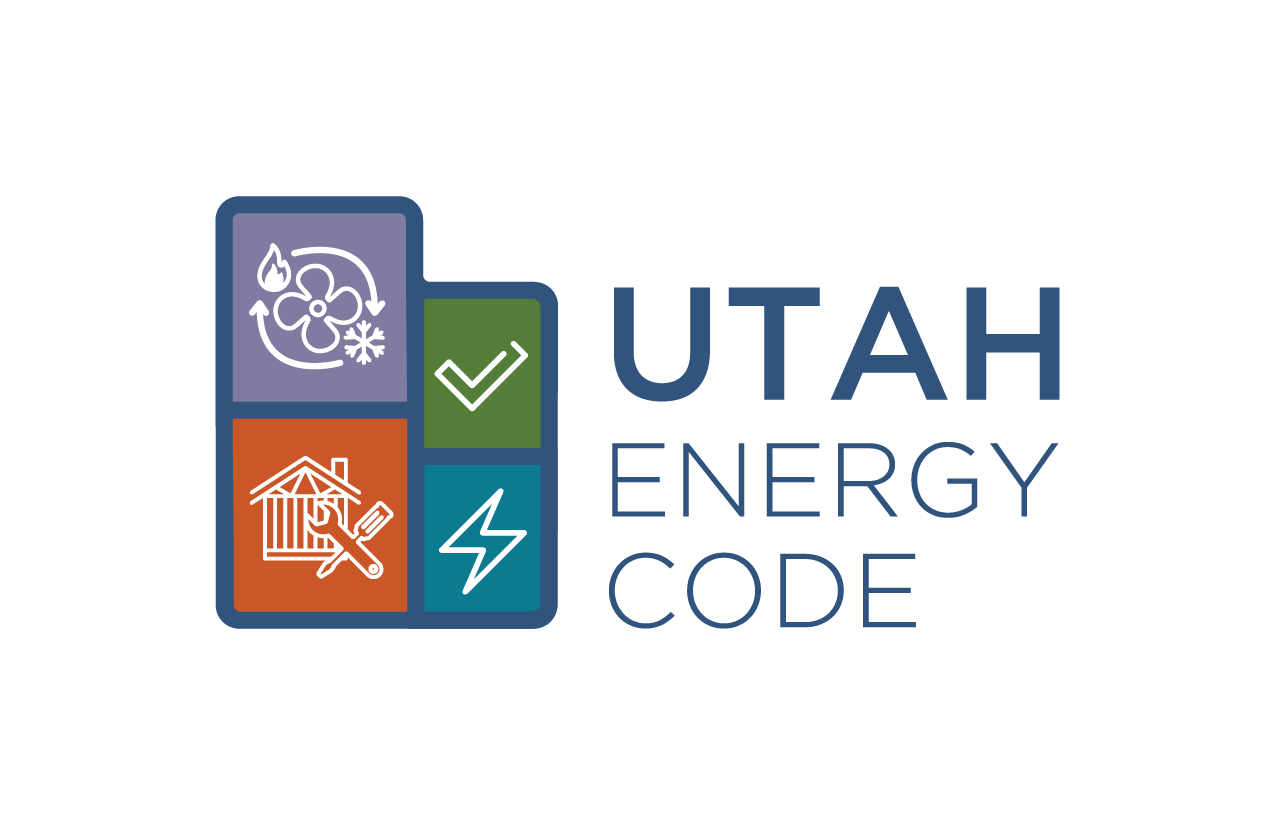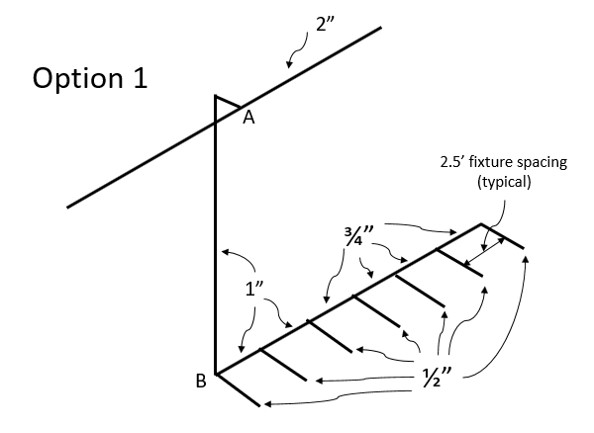Question:
For many years hot water piping has been typically installed to restroom fixtures as represented in Option 1 below. An Inspector has told us the IECC requires piping configured as shown in Option 2. Is this a mandatory requirement, and if so why?
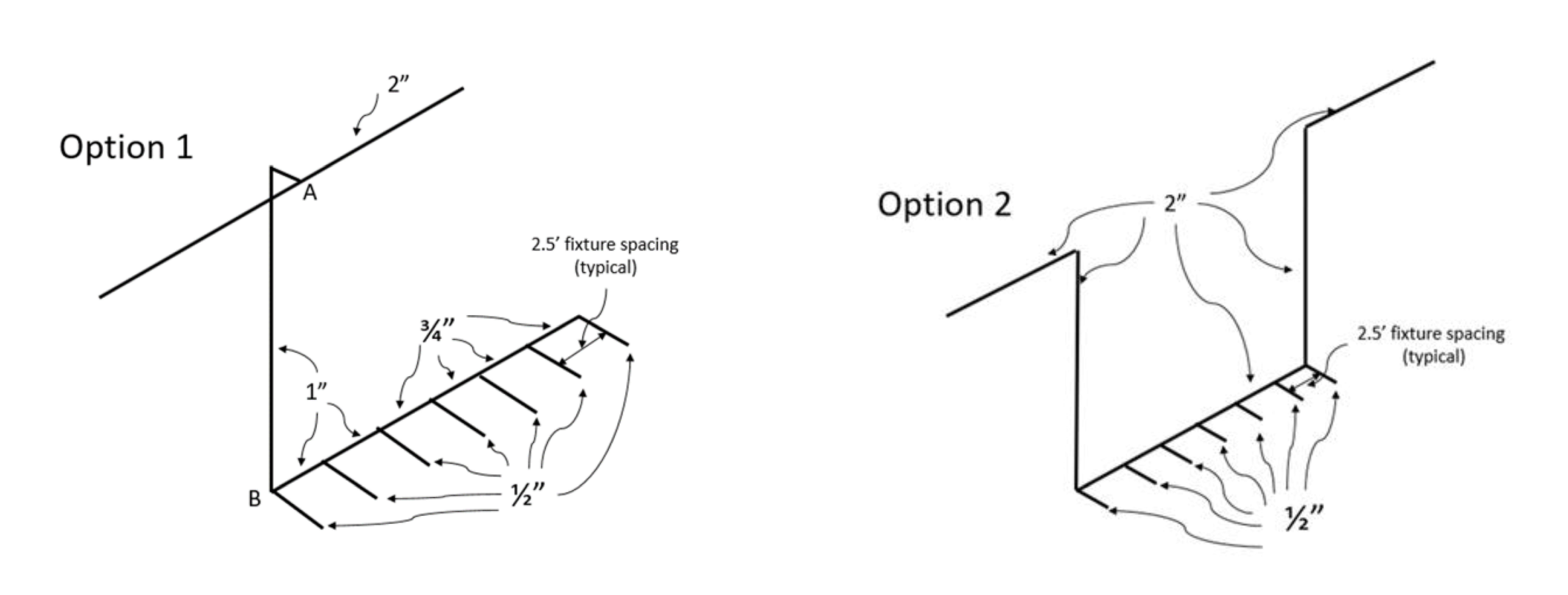
Answer:
IECC Section C404 Service Water Heating (Mandatory) was completely rewritten/updated in the 2015 Edition. Sub-Section C404.5 details new requirements focused on providing hot water at public restroom lavatory faucets within a few seconds, rather than a lengthy time-to-tap, wasting water for 30 seconds or longer in many cases. The increased efficiency is obtained through limiting the flow rate and the pipe length or volume between the hot water source and the fixtures. The code does not specify a required configuration, rather two methods that may be used to meet the intent of the code. Please note, the source can be the water heater, a circulating system, or a heat trace maintenance system. Also, it is virtually impossible to comply in a public restroom with a remote water heater, without a circulating or temperature maintenance system.
Option 1 above shows a 1” branch coming off a 2” hot water circulating line. The 2” line is the source, with hot water always available at the 2 X 2 X 1 tee (A). The code focus is on the volume of water in the piping from the tee to termination of the fixture supply pipe. IECC Table C404.5.1 (below) provides pipe volume and length limits used to determine compliance.
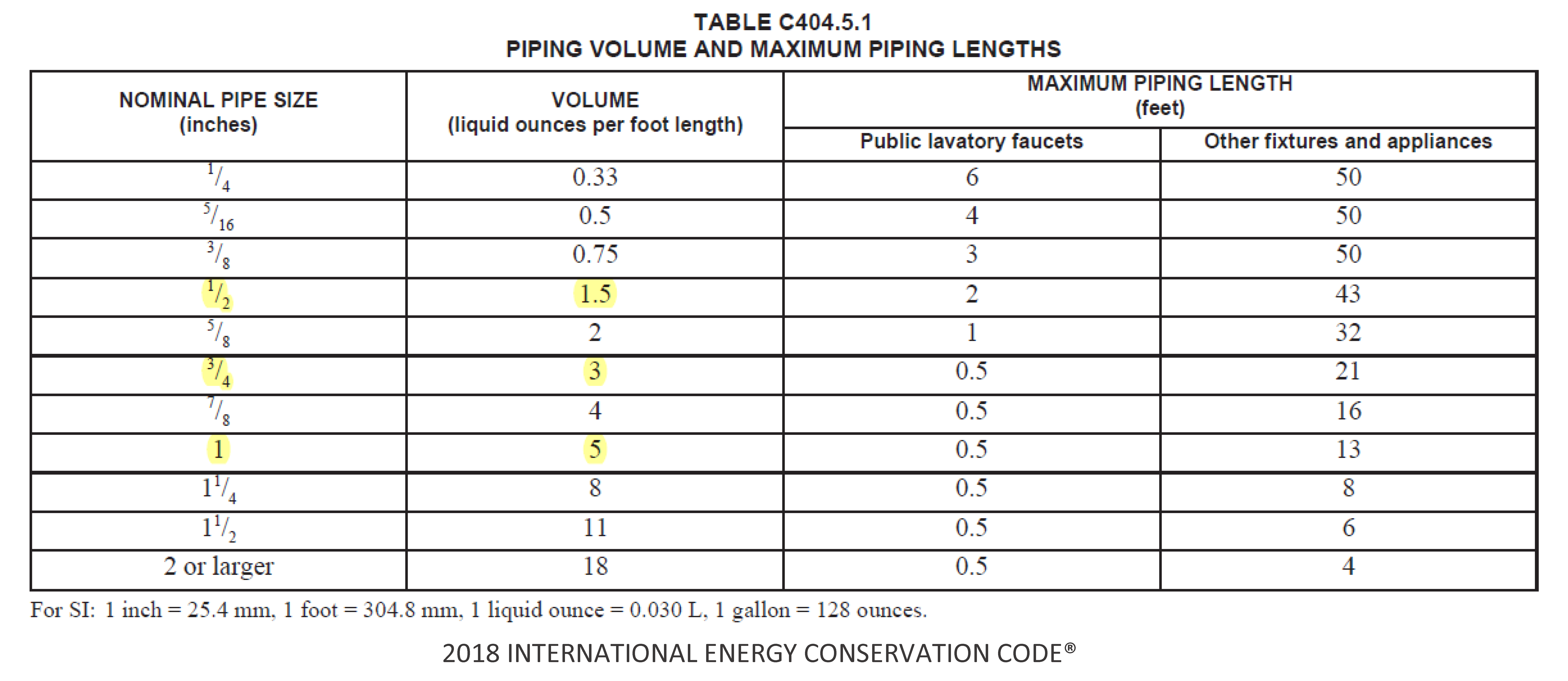
A quick calculation will identify the inefficiency in the Option 1 design when used in a public restroom.
Length A-B = 10’
Length between each fixture branch = 2.5’
Length each branch to fixture = 1.5’
Total length and volume to furthest fixture:
| 1” pipe: 10’ + 2.5 + 2.5’ = 15’ | Volume/ft: 5 fluid oz. | 15 X 5 = 75.0 fluid oz. |
| ¾” pipe: 2.5’ X 3 = 7.5’ | Volume/ft: 3 fluid oz. | 7.5 X 3 = 22.5 fluid oz. |
| ½” pipe: 2.5’ + 1.5’ = 4’ | Volume/ft: 1.5 fluid oz. | 4 X 1.5 = 6.0 fluid oz. |
| Total Volume to furthest fixture: | 103.5 fluid oz. | |
| 128 fluid oz. per gallon; volume in gallons = 103.5 ÷ 128 = 0.81 gallons | ||
Table 604.4 in the International Plumbing Code (IPC) identifies maximum fixture flow rates:
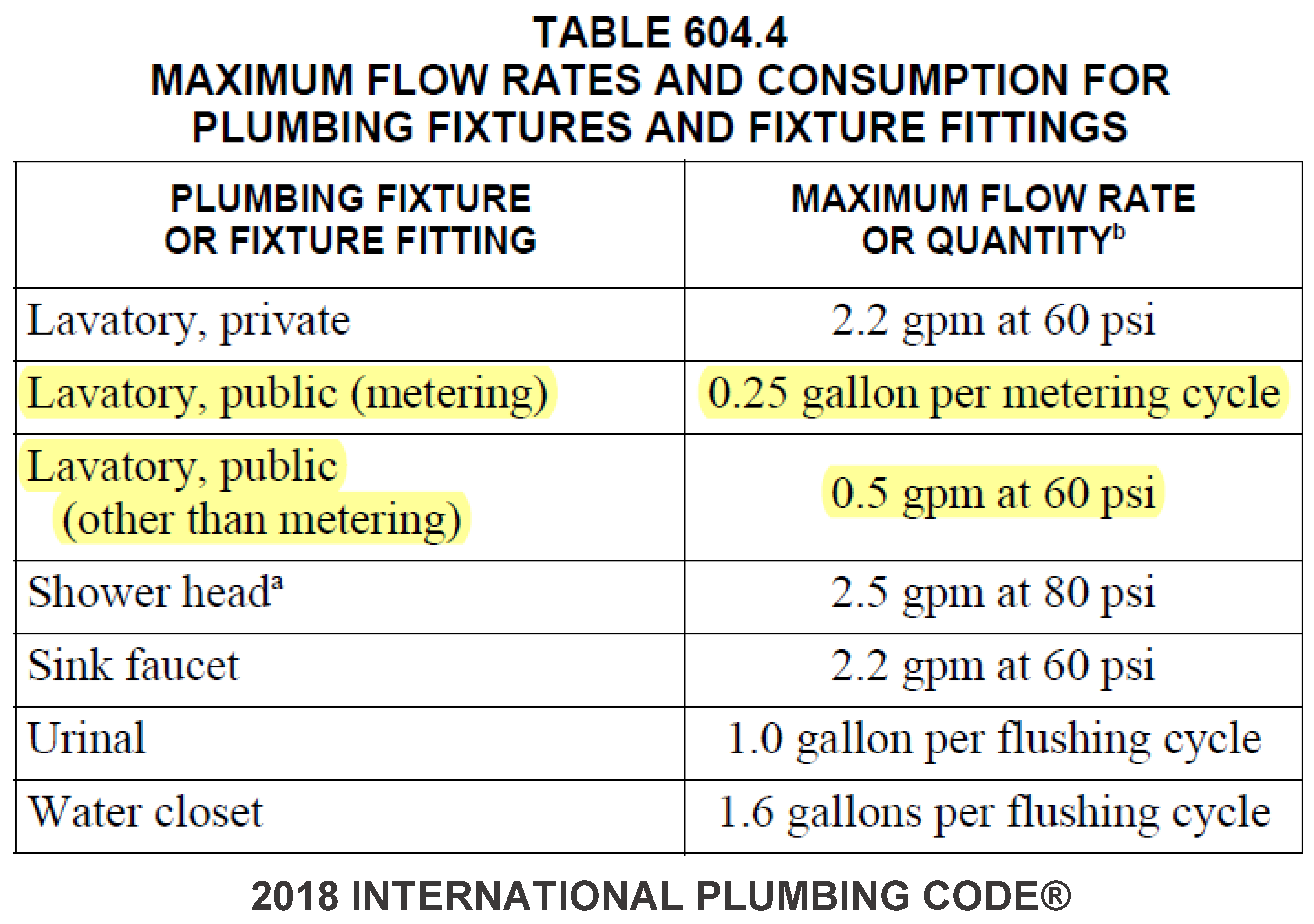
Considering a public lavatory with a maximum flow rate of 0.5 gpm, and the calculated 0.81 gallons of water which must clear the line to obtain hot water at the far fixture:
0.81 gallons ÷ 0.5 gpm = 1.62 minutes, or 97 seconds
Do you wait more than one and one-half minutes for warm water to wash your hands? Imagine the hand-waving required to obtain 97 seconds of flow with touchless faucets!
The code provides two option. First, C404.5.1 Maximum allowable pipe length method, identifies the maximum length allowed with various pipe sizes for public lavatories, with a longer length allowed for other fixtures. See Table C404.5.1 above. Notice, the smaller the pipe the longer the allowed length.
IECC C405.5.2 Maximum allowable pipe volume method, limits the calculated volume from the source to the termination of the fixture supply pipe to 0.2 oz. for a public lavatory faucet and 0.5 gallons for other fixtures and appliances. The 0.2 oz. and 0.5-gallon numbers are defined in the code text, not in a Table. This volume method is clearly more restrictive than the maximum length option.
Please note the following:
- See the current IECC for full code text and the IECC Commentary for further discussion.
- Do not panic due to the small tubing sizes listed in the Table. ¼” tubing flows about 1 gpm at 60 psi. Plenty for the maximum 0.5 gpm flow rate for a public lavatory.
- When using the maximum length method, if more than one pipe size is used, the largest must be used in the calculations.
- The code is specific in identifying the pipe under consideration is the pipe from the source to the termination of the fixture supply pipe. It does not include the volume in the fixture shutoff valves, flexible supply connectors to a fixture fitting, and within the fixture fitting.
- A small instant hot water heater or small tank-type water heater at the lavatories is becoming an increasingly popular method for compliance.
- Water heater efficiency, pipe insulation, circulation and temperature maintenance systems, pools and spa requirements are also found in IECC C405.
Please refer additional questions or comments to www.utahenergycode.com or Brent Ursenbach at [email protected]
